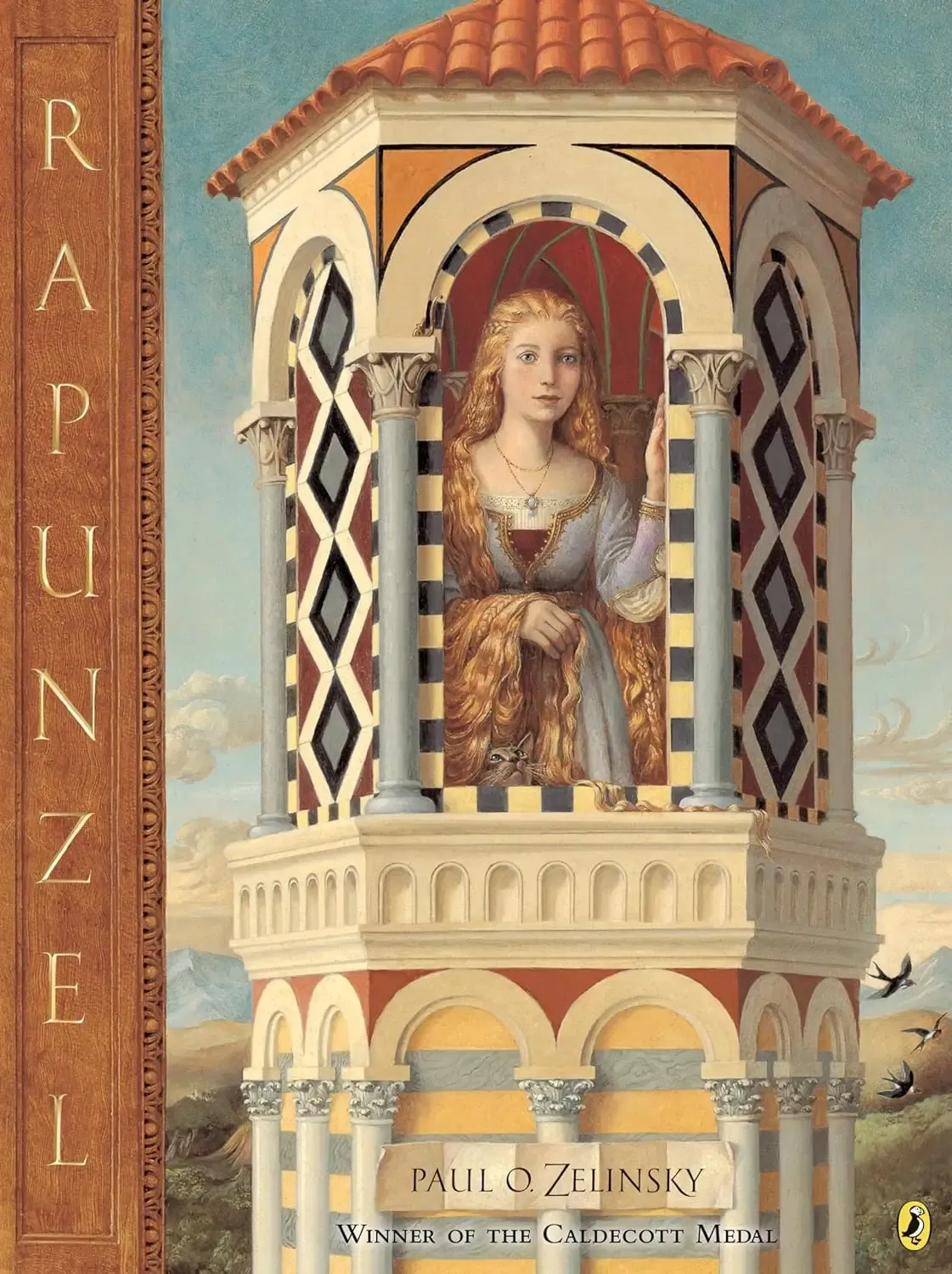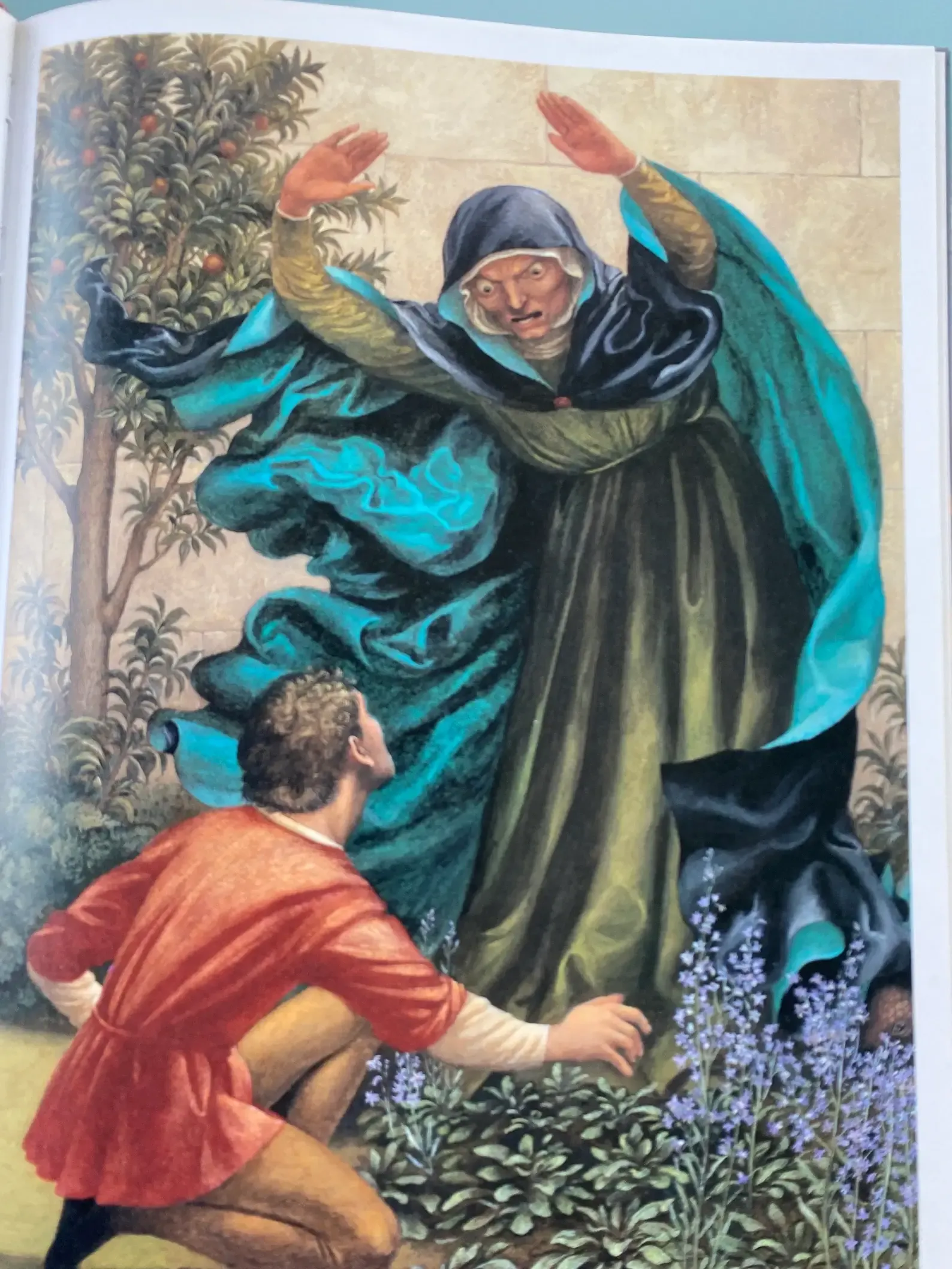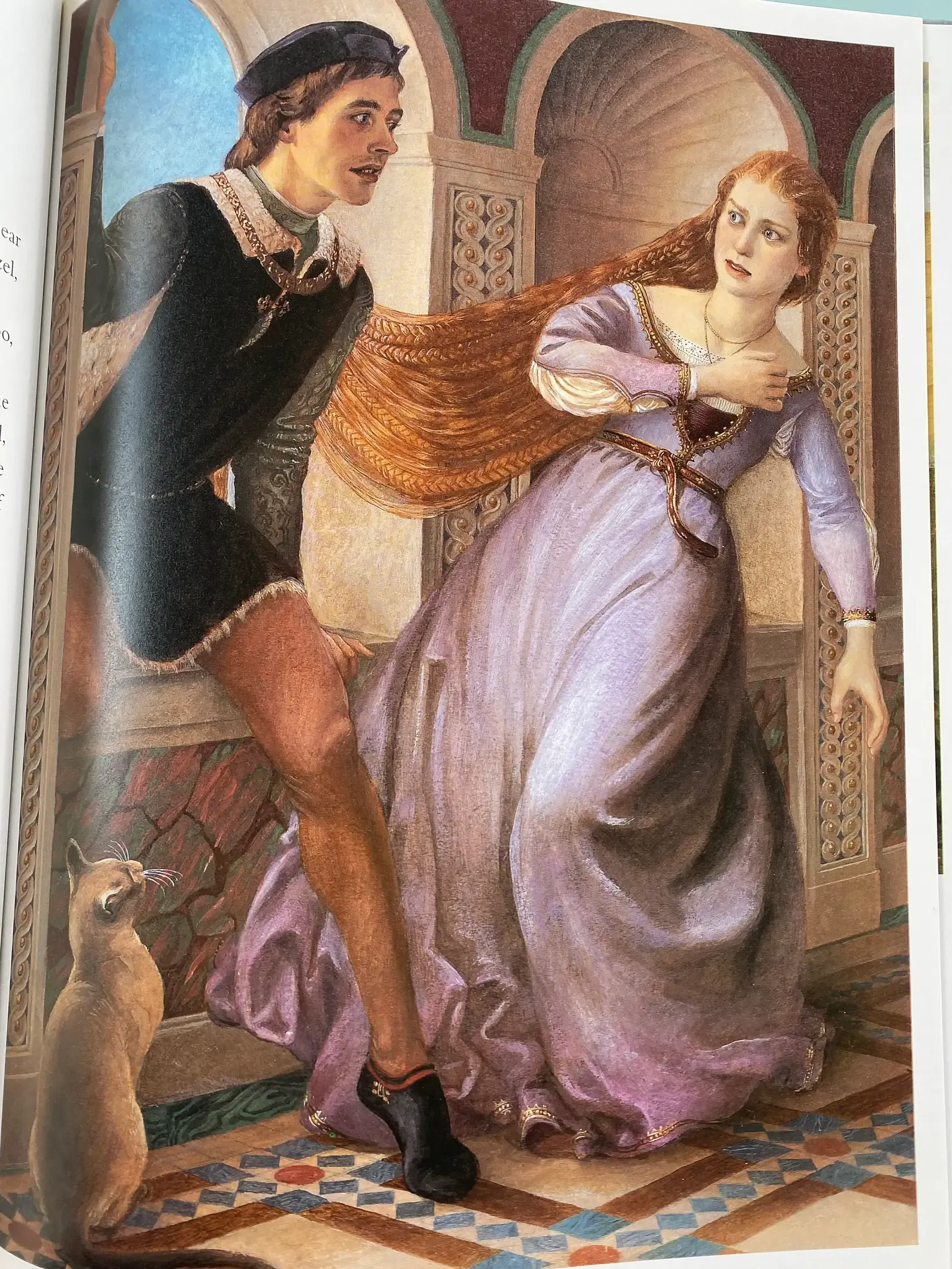Rapunzel by Paul O. Zelinsky is a breathtaking retelling of the classic fairy tale, but its real magic lies in the way it reframes the story through the lens of personal choices and their consequences. Coupled with Zelinsky’s opulent oil-paint illustrations, the narrative takes on a depth that transforms a familiar tale into a profound exploration of love, sacrifice, and autonomy.
We all know the basics of the Rapunzel story: a girl locked in a tower, a prince who climbs her golden hair, and their eventual escape. But in Zelinsky’s version, each character’s choices carry weight, shaping the story in unexpected ways. The husband’s decision to steal rampion for his wife, the sorceress’s demand for their child, and even Rapunzel’s own moments of agency paint a picture of lives intertwined by actions, not fate.
One of the most intriguing aspects of Zelinsky’s retelling is his portrayal of the sorceress. Far from being a one-dimensional villain, she’s a figure of power and control, but also of loneliness and misguided love. Her decision to raise Rapunzel in isolation feels less like an act of cruelty and more like an attempt to shield her from the harshness of the outside world. Zelinsky’s nuanced storytelling invites readers to empathize with her motives, even as they root for Rapunzel’s freedom.
Rapunzel herself is not a passive character in this version. Her moments of rebellion and resourcefulness signal a shift from the traditional damsel-in-distress trope. By choosing to trust the prince and eventually forging her own path, she transforms from a sheltered girl to a young woman in control of her destiny.
Zelinsky’s artwork deserves as much praise as the text itself. Inspired by the Renaissance, the richly detailed oil paintings lend an air of grandeur and timelessness to the story. Every brushstroke feels intentional, echoing the layers of complexity in the narrative. Readers are transported to a world where every castle, forest, and tower feels alive, reinforcing the emotional resonance of the tale.
At its core, Zelinsky’s Rapunzel is a story about the power of choices, good, bad, and everything in between. It encourages readers to consider the consequences of their actions and to find strength in their ability to change their own narratives.
Paul O. Zelinsky’s Rapunzel is more than just a beautifully illustrated fairy tale, it’s a sophisticated exploration of human nature, wrapped in a story we’ve known since childhood. For readers young and old, it’s a reminder that our choices define us, and that even in the darkest of towers, there’s always a way to find the light.
Questions to ask while reading:
- How do the characters' choices shape the story in Zelinsky's Rapunzel?
- What makes the sorceress a complex character in this retelling?
- How does Rapunzel's journey reflect themes of autonomy and personal growth?




